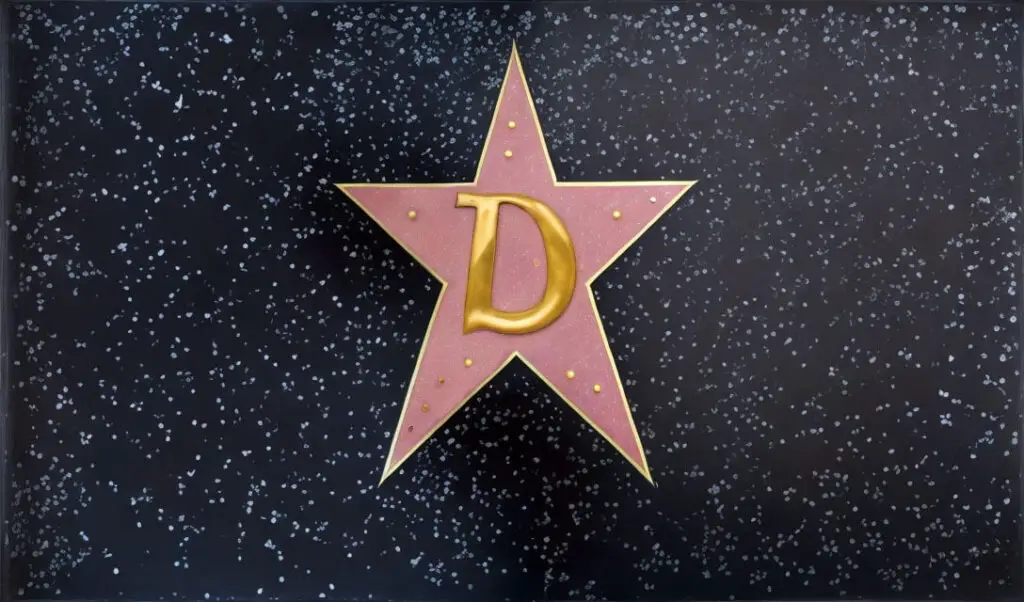The letter D. It’s more than just a symbol or a sound. It’s a key player in our language, a building block of our communication. It’s a small piece of a larger puzzle that forms the beautiful picture of our speech and text. But have you ever stopped to consider its significance? What does the letter D mean, and why is it so important? In this post, we’ll delve into the fascinating world of this fourth letter of the ISO basic Latin alphabet and the modern English alphabet, exploring its roots, its meanings, and its impact on our language and our world.
The Letter D in Different Languages

The Letter D in Spanish
In Spanish, the letter D is pronounced as “de,” and it’s a crucial part of the language. It’s used in many common words and phrases, and understanding its usage is key to mastering Spanish.
The Letter D in Greek
In Greek, the letter D is known as delta. It’s a letter with a rich history and a significant role in the Greek language. The shape of the Greek delta symbol (∆) is even used in mathematics and science to represent change.
The Letter D in Old English
In Old English, the letter D had a similar sound to its modern English counterpart. It was used in many words in Old English literature, showcasing its importance even in the early stages of the English language.
The Spiritual and Symbolic Meaning of the Letter D

The Spiritual Meaning of the Letter D
The spiritual meaning of the letter D is deep and multifaceted. In several languages, it’s associated with supreme forces. For example, it’s the first letter of the Greek word Demiurge, which means God, and of the Latin word Deus, also meaning God. In Sanskrit, it’s the first letter of Deva, which stands for Lord.
What Does the Letter D Symbolize in Different Cultures?
In different cultures, the letter D symbolizes various concepts. In the Pythagorean theory, the numeric value of the letter D is 4, referred to as the Pythagorean Tetrad or the sacred Four. It’s also connected to the Tetragrammaton, a biblical proper name of God consisting of four Hebrew letters, usually transliterated YHWH or JHVH.
Exploring Words and Phrases Starting with D
8-Letter Words Starting with D
Eight is a number of balance and harmony, and 8-letter words starting with D reflect this. Here are a few examples:
- Dazzling: Meaning extremely impressive, beautiful, or skillful.
- Daughter: A term used to refer to one’s female offspring.
- Dynamite: A high explosive that’s used for blasting and demolition.
Cool Words That Start with D
There are many cool words that start with D that add flavor to our language. Here are a few examples:
- Dapper: Neat and trim in dress and appearance.
- Draconic: Of, relating to, or characteristic of a dragon.
- Dulcet: Sweet and soothing (often used ironically).
Short and Easy Words That Start with D
Short words that start with D are the building blocks of our language. Here are a few examples:
- Dog: A domesticated carnivorous mammal that typically has a long snout, an acute sense of smell, non-retractable claws, and a barking, howling, or whining voice.
- Dip: Put or let something down quickly or briefly in or into (liquid).
- Dot: A small round mark or spot.
Similarly, easy words that start with D, such as “dance,” “dawn,” and “dusk,” make the language accessible to learners.
7-Letter Words and 5-Letter Words with D in the Middle
7-letter words starting with D, like “drawing” or “dolphin,” and 5-letter words with D in the middle, like “proud” or “cloud,” further demonstrate the flexibility and utility of the letter D in the English language.
The Art of Writing the Letter D

How to Write the Letter D
Learning how to write the letter D is a fundamental step in literacy. The process involves understanding the shapes and strokes that create this distinctive character, both in its uppercase and lowercase forms.
The Letter D in Cursive
The letter D in cursive adds a touch of elegance and fluidity to our writing. It’s a skill that, while not as commonly used today, still holds value in certain formal and artistic contexts.
The Letter D in the World Around Us

Countries That Start with the Letter D
There are several countries with the letter D as their initial. Here are a few examples:
- Denmark: A Scandinavian country comprising the Jutland Peninsula and numerous islands. It’s known for its Viking history and modern design aesthetics.
- Djibouti: A country located in the Horn of Africa. It’s known for its rugged landscapes and rich cultural history.
- Dominican Republic: A Caribbean nation known for its beautiful beaches, golfing, and music.
Foods That Start with the Letter D
From donuts to dumplings, there are countless delicious foods that start with the letter D. Here are a few examples:
- Donuts: A type of fried dough confectionery or dessert food, usually covered in sugar or glaze.
- Dumplings: A broad classification for a dish that consists of pieces of dough (made from a variety of starch sources) wrapped around a filling, or of dough with no filling.
- Dates: A sweet fruit from the date palm tree, commonly consumed in many parts of the world.
Animals That Start with the Letter D
Nature is full of wonders, and many of them start with the letter D. Here are a few examples:
- Dogs: Man’s best friend, known for their loyalty and companionship.
- Dolphins: Intelligent and friendly marine mammals known for their playful nature.
- Ducks: Waterfowl known for their ability to swim, walk, and fly.
Flowers That Start with the Letter D
From daisies to daffodils, flowers that start with the letter D add beauty and diversity to our world. Here are a few examples:
- Daisies: Simple yet charming flowers that symbolize innocence and purity.
- Daffodils: Bright yellow flowers that are often associated with spring and renewal.
- Dahlias: Stunning flowers known for their layered petals and vibrant colors.
The Letter D in Names, Movies, and Songs

Names That Start with the Letter D
Names that start with the letter D are diverse and beautiful. Here are a few examples:
- David: A traditional name that means “beloved.” It’s a name with biblical roots, as King David was a significant figure in the Old Testament.
- Diana: A classic name that means “divine.” It’s the name of the Roman goddess of the moon, hunting, and childbirth.
- Dax: A unique name with Old French origins, meaning “leader.”
Movies That Start with the Letter D
The world of cinema is full of movies that start with the letter D. Here are a few examples:
- Dirty Dancing: A classic 1987 film about a young woman who falls in love with her dance instructor at a summer resort.
- Die Hard: An action-packed movie from 1988 featuring Bruce Willis as a New York police officer taking on a group of criminals in a Los Angeles skyscraper.
- Dracula: A 1992 gothic horror film directed by Francis Ford Coppola, based on Bram Stoker’s novel of the same name.
The Letter D Song
When it comes to teaching children about the letter D, music can be a fun and effective educational tool. Here are five popular songs that are commonly used to introduce young learners to the letter D:
- “The D Song“: This lively and catchy song specifically focuses on the letter D. It helps children recognize the letter, its sound, and words that start with D. With interactive lyrics and a memorable melody, it engages children in a playful learning experience.
- “Dancing Digits“: This song combines the fun of dancing with the introduction of numbers and counting. It incorporates the letter D as a key element, highlighting its shape and sound within the context of numbers. Through rhythmic movements and interactive counting, children learn about the letter D while developing early math skills.
- “D is for Duck“: This delightful song introduces children to the letter D through the familiar concept of animals. It focuses on words like “duck,” “dolphin,” and “dog,” emphasizing the letter D sound and connecting it to corresponding animal names. The song encourages children to actively participate by imitating animal sounds and movements.
- “Dino Dance“: This imaginative song takes children on a dinosaur-themed adventure while teaching them about the letter D. With playful lyrics and actions, it combines learning and movement to engage children’s motor skills and letter recognition. The song introduces dinosaur names and encourages children to dance and stomp like dinosaurs, making learning interactive and enjoyable.
- “Drums and Dancers”: This rhythmic song incorporates the letter D through the sound of drums and the action of dancing. It introduces children to different types of drums and dance styles while highlighting the letter D in various words. The song encourages children to clap, tap, and dance along, fostering a multi-sensory learning experience.
These popular songs are designed to capture children’s attention and make learning about the letter D enjoyable and interactive. They provide a memorable way for young learners to engage with the letter D, its sound, and associated words.
Conclusion
We’ve journeyed through the world of the letter D, exploring its significance in languages, its spiritual and symbolic meanings, its presence in words and phrases, the art of writing it, and its impact on our world. We’ve seen how this single letter can represent a door in ancient times, symbolize divine entities, start the names of countries and foods, and even inspire the titles of movies.
The letter D is indeed powerful. It’s more than just a part of our alphabet—it’s a part of our history, our culture, and our daily lives. So the next time you write a letter D, take a moment to appreciate its rich history and significance.
We encourage you to continue exploring the fascinating world of letters. Try engaging in some letter D activities, or practice writing the letter D in different styles. Remember, every letter has a story to tell, and there’s always more to learn.
This concludes our deep dive into the letter D. We hope you’ve enjoyed this journey as much as we have, and we look forward to exploring more letters with you in the future. Stay curious, and keep learning!





Yes really.